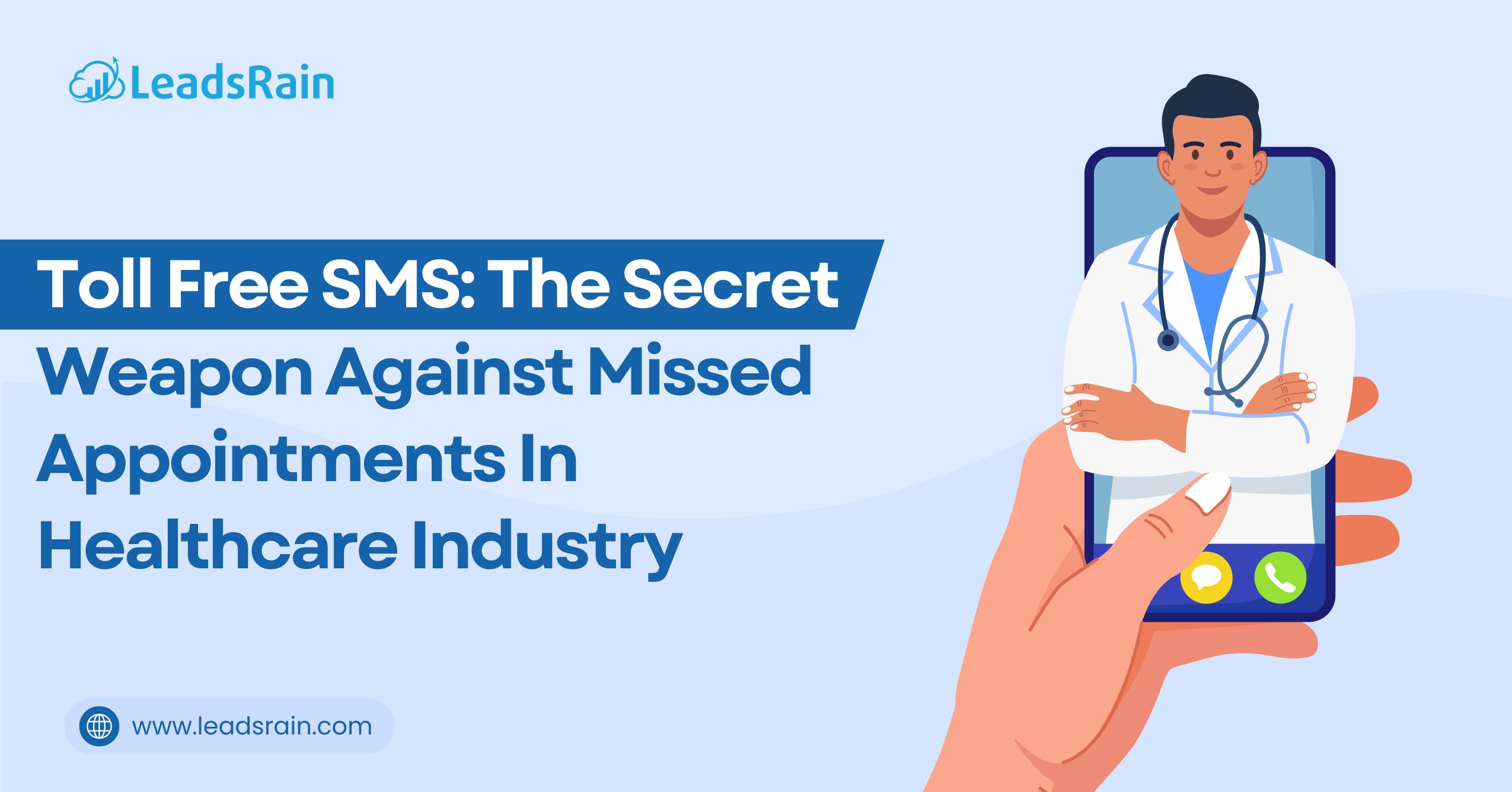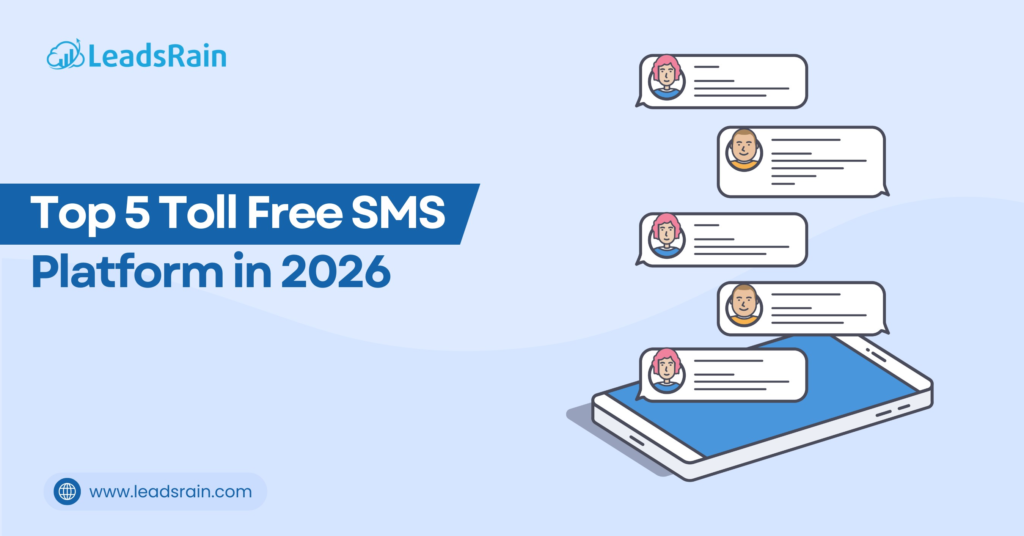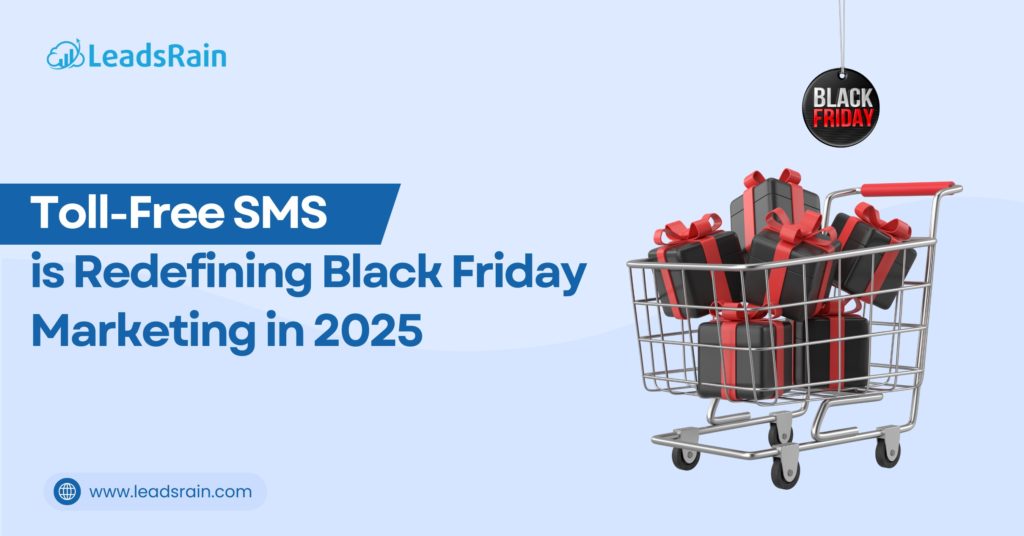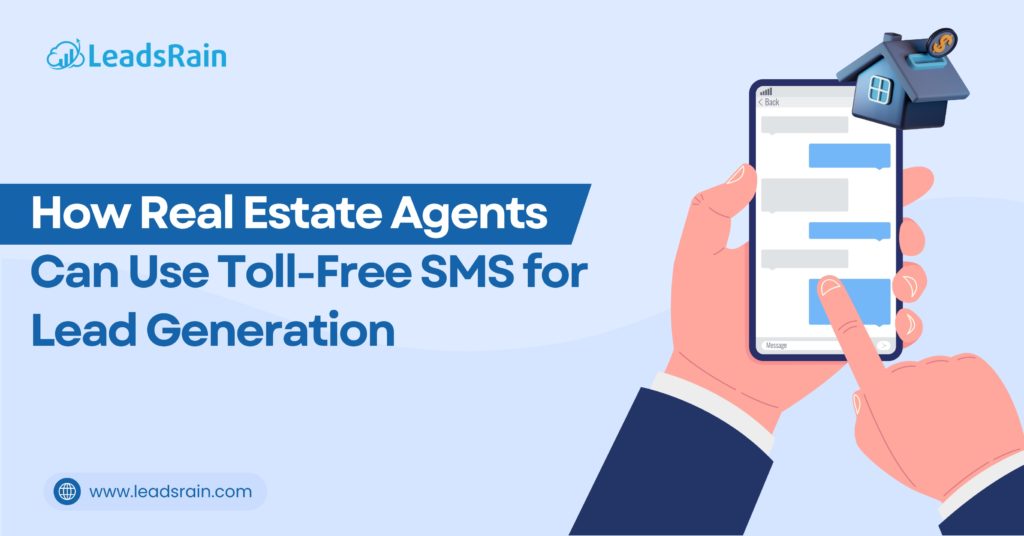Empty exam rooms. Missed slots. Staff standing by. It’s not dramatic — it’s daily. Across outpatient settings, roughly 1 in 5 appointments goes unattended. Some clinics lose 3 out of 10. Behavioral health? Often worse. Pediatrics? Same. Chronic care follow-ups? Forget 30% — some hit 45%. That’s not a rounding error. It’s a system leak. Revenue walks out the door. Wait times stretch. Care plans stall. Clinics have tried calling. Mailing cards. Sending emails. Few stick. One method does — and it’s not new. It’s just finally being used right: toll-free SMS. No hype. No overhaul. Just texts that patients actually open — and reply to — without thinking twice.
Phone calls, emails, and mailed reminders have all been tried. None match the consistency, reach, or response rate of toll-free SMS.
This piece breaks down how toll-free SMS works, why it outperforms alternatives, how to implement it correctly, and what outcomes clinics can realistically expect.
Analysing Toll-Free SMS for the Healthcare Industry
Toll-free SMS means sending text messages from a dedicated 8XX number — think 800, 888, 877. It’s not just a different sender ID. It’s a different class of communication.
Standard SMS often comes from random 10-digit numbers. Patients don’t recognize them. Carriers sometimes flag them as spam. Replies may cost the recipient — a small thing, but enough to stop someone from responding.
Toll-free SMS fixes that. Replies are free. Numbers are branded and verified. Messages land in the main inbox, not the spam folder. Patients know it’s official — and safe to engage with.
That’s especially important in healthcare, where trust and accessibility matter. Seniors. Rural patients. Families on prepaid plans. All can reply without worrying about fees or tech barriers. No app downloads. No Wi-Fi needed. Just tap and go.
These messages are typically automated — triggered by your scheduling system. Integrate with your EHR, and you can auto-populate patient name, provider, date, time, location, even prep instructions like “Fast after midnight.” Personalization isn’t a luxury. It’s what makes the message feel relevant — and worth acting on.
Why Toll-Free SMS Outperforms Traditional Reminder Methods
It’s not enough to say “texts work.” The real advantage comes from using toll-free numbers — not just any SMS. Here’s why:
1. Zero cost to reply — even for patients on the most basic plans
That’s the game-changer. Someone with a flip phone and a $10 monthly plan can still text “YES” or “RESCHEDULE” without getting charged. Standard SMS doesn’t guarantee that. Phone calls require real-time availability. Emails get ignored. Free replies remove the last barrier to action.
2. Fewer messages blocked or marked as spam
Carriers give toll-free numbers higher deliverability scores. They’re registered, branded, traceable. A message from “888-YOUR-CLINIC” looks official. One from “312-555-7890” looks like a robocall. Patients open official-looking messages. They ignore the rest.
3. Reaches populations other tools leave behind
You don’t need a smartphone. Or data. Or an email account. If the patient has a mobile phone — any mobile phone — toll-free SMS works. That covers nearly 100% of adults in the U.S., including seniors and low-income households. Other digital tools assume more than many patients have.
4. Lowers anxiety for high-stress appointment types
Think behavioral health. First-time visits. Pediatric checkups. Patients might be nervous. Unsure. Need to ask a quick question. With toll-free SMS, they can text “Is parking free?” or “Can I bring my mom?” without calling, waiting on hold, or feeling judged. That small opening makes a big difference in attendance.
5. Drives higher confirmation and response rates
Data from multiple health systems shows reply rates jump 15–25% when switching from long-code SMS to toll-free. Why? Patients trust the number. Know replies are free. Recognize it as part of their care team’s communication. Trust leads to action. Action leads to fewer empty chairs.
6. Allows smart escalation — without skipping patient choice
If someone doesn’t reply, the system can auto-trigger a voice call or email — but only after giving them space to respond on their own. No more cold-calling patients who just needed a text reminder. This hybrid model respects preferences while closing gaps.
6. Builds brand recognition over time
When every message comes from the same 888 number, patients start to recognize it. They know it’s you. They expect it. That consistency builds trust — and reduces confusion. Rotating numbers or generic short codes feel temporary. Toll-free feels permanent. Professional. Reliable.
Strategic Implementation of Toll-Free SMS Reminders
Rolling this out isn’t plug-and-play. It takes planning — but not complexity. Here’s how to do it right.
1. Consent and Opt-In Protocols
You need explicit permission. Not just for compliance — for trust. Under TCPA, automated messages require opt-in. Make it clear in registration or check-in:
“Get appointment reminders by text? Replies to our toll-free number are always free. Reply STOP anytime to opt out.”
Simple. Transparent. Reassuring.
2. Message Design and Timing
One message isn’t enough. Layer them:
- 7 days out: Friendly heads-up
“Hi [Name], your visit with Dr. [Last] is set for [Date] at [Time].” - 48 hours out: Ask for confirmation
“Your appointment is in 2 days. Reply YES to confirm, RESCHEDULE to change, or HELP for questions.” - Morning of: Final nudge
“See you at [Time]! We’re at [Address]. Running late? Text LATE.”
Keep it under 160 characters. Skip the jargon. Use the patient’s name. Make the next step obvious.
3. EHR/EMR Integration
Don’t create double work. Pick a platform that syncs with Epic, Cerner, NextGen, or whatever you use. Appointments update automatically. Cancelled visits stop messages. New ones trigger reminders. No manual entry. No errors.
4. HIPAA Compliance and Data Security
This isn’t optional. Your SMS vendor must sign a BAA. Messages need encryption. Audit logs. Secure storage. Never include PHI in the text body. Need to share lab instructions or forms? Send a secure link to the patient portal instead.
5. Analytics and Optimization
Track what matters:
- % of patients who confirm
- No-show rate before and after
- Reschedules initiated via text
- Opt-out rate
- Average response time
Test small changes. Try sending the 48-hour message at 9 AM vs. 6 PM.
Addressing Common Operational Concerns
Patient Demographics and the “Digital Divide”
Yes, some patients are less tech-savvy. But mobile ownership among seniors is over 85%. Texting is the #1 function they use. For the few who prefer calls, set up auto-callback for non-responders. You don’t have to choose one channel. Blend them.
Cost and ROI
Most platforms charge $0.01–$0.05 per message. Even at the high end, preventing one no-show per day — worth $100–$300 — covers thousands of texts. Most clinics see ROI in under 60 days. Some in 30.
Staff Workflow Impact
This doesn’t add work — it removes it. Less time calling. Less time rescheduling. Less time chasing confirmations. Staff report lower stress and more time for patient-facing tasks. That’s a win everyone notices.
Opt-Outs and Patient Preferences
Expect 3–5% to opt out. Usually because they didn’t realize replies were free. Fix that by including “Replies are free” in your first message. After that, opt-outs drop sharply.
Summing It Up
This isn’t about chasing the next shiny tool. It’s about fixing what’s broken — simply. Toll-free SMS doesn’t ask patients to download anything, log in, or call back. They get a text. Tap a button. Done.
Clinics that use it right see fewer gaps in the schedule. Less scrambling. Fewer frustrated staff. Patients show up because it’s easy — not because they’re guilted or reminded five times. Setup matters. Consent. Timing. Integration. But once it’s running? It just works.
No fanfare. No extra labor. Just fewer empty chairs. And in a world where every minute counts, that’s not a bonus. It’s the baseline.
To understand how to get started in the best possible manner, connect with our experts now or drop us a line at support@leadsrain.com




